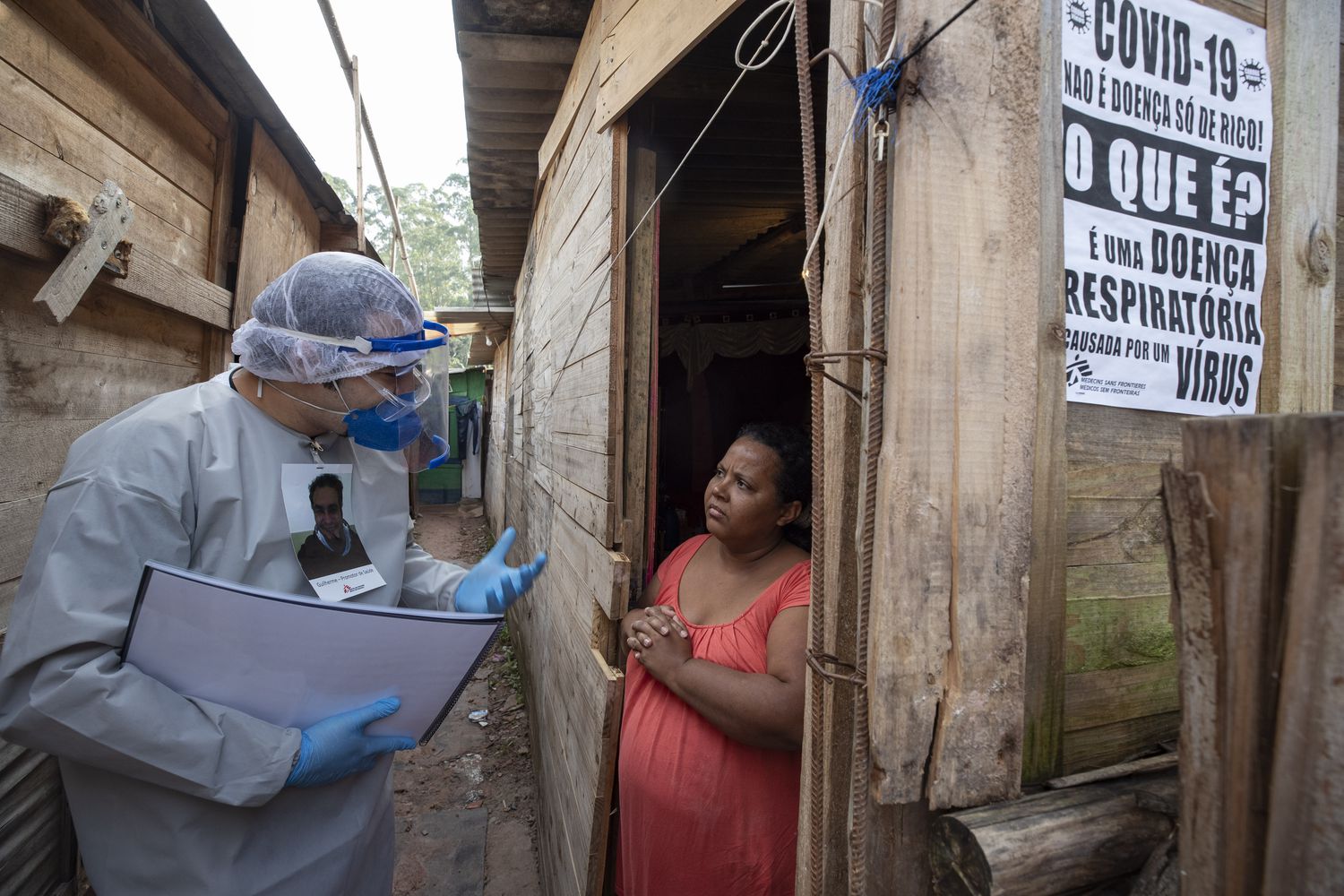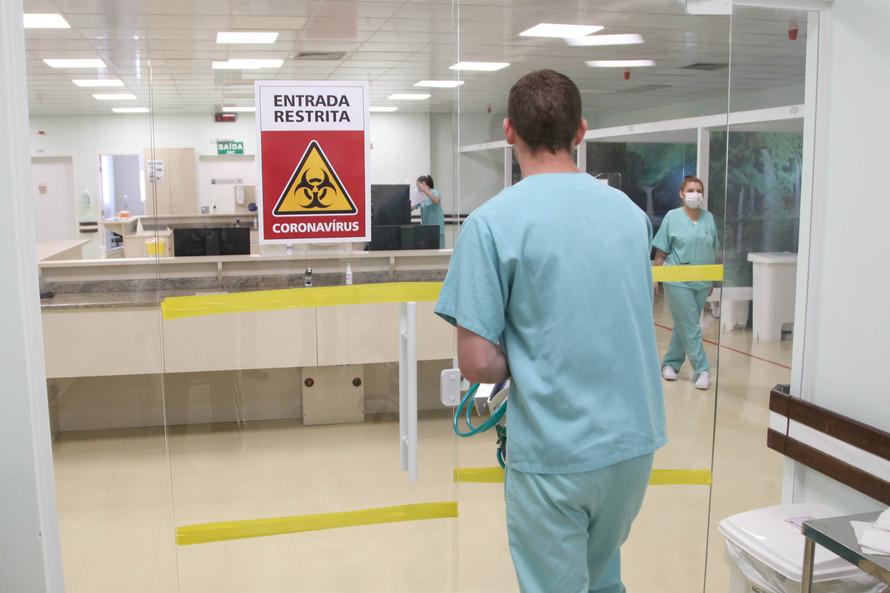RIO DE JANEIRO, BRAZIL – With 584,016 confirmed cases of the novel coronavirus and 32,548 deaths – with another record of deaths reported in 24 hours on Wednesday, 1,349 – Brazil sees the epidemic spread across its territory at a similar speed, in addition to the first epicenters of the epidemic in the country. A study of the new cases reported to the Ministry of Health last week shows that 74 percent of the states showed a higher growth rate of the disease than the national average.

Since Brazil recorded its first case of the disease, the novel coronavirus initially gained ground in large urban centers with a large influx of people coming from abroad – such as São Paulo, Rio de Janeiro, Fortaleza, and Manaus. Later, the cases became more concentrated in the North and Northeast regions. Now, the epidemic is migrating to regions until now less afflicted by the Covid-19, such as the South and Center West. There is still a strong trend towards the virus spreading inland, a concern that affects small towns with their hospital deficit.
Between May 27th and June 2nd, Brazil counted 143,562 new cases of coronavirus, a total 35 percent higher than the 411,821 infections the week before. The increase occurs despite the fact that the volume of cases is likely to be underestimated, since the country is still unable to test its population en masse and has made little progress so far in sample studies in order to draw the real scale of the epidemic.
According to the government report, 20 states saw their cases grow at a faster rate than the country average. While the first epicenters such as São Paulo and Rio de Janeiro are starting to show a slower growth, states that were progressing more slowly are now seeing their contagion curve rise. Goiás and Alagoas were the states that showed the highest percentage increase: the former rose from 2,843 to 4,377 cases in a week, an increase of 54 percent, while the latter rose from 7,580 infections to 11,559, a 52 percent increase over a week ago. São Paulo, which is still the epicenter of the disease with over 8,000 deaths, grew from 89,483 cases to 118,295, a rise of 32 percent.
“There were places with sharper curves while it was less pronounced in others. This started from the Southeast region, with São Paulo and Rio de Janeiro. Then Ceará, Pernambuco and Amazonas joined. This phenomenon spread to the Northeast and to the North. The graphs are merging. And now it’s happening both in Minas Gerais and the Centerwest region,” explains Domingos Alves, university professor of social medicine at USP Ribeirão Preto, who is researching the spread of the coronavirus epidemic in Brazil.
The researcher, who is committed to understanding the behavior of the disease since the first case recorded in the country, notes that even the mortality rates of states are beginning to converge. “It’s all coming together. You see the mortality rates taper off to the same rate,” he says.
Testing shortfalls and the unequal capability of some states to perform tests, influence statistics and, according to researchers, hamper the assessment of whether there is in fact a sustained deceleration in the novel coronavirus spread. For now, the available data show only a few trends and sound few alerts.
When analyzing the current moment of the pandemic, the Ministry of Health points out that there is still a strong concentration of cases in the North and Northeast regions, but the Government’s concern is primarily with its spread inland, which has been growing in smaller cities with poor or non-existent hospital structures.
“We have started a new stage in some units of the federation, which is its impact inland. We are watching the epidemic migrating. Right now, the goal is to provide support so that cases that are not treatable in the interior may be transferred to the capitals,” says Élcio Franco, the deputy executive secretary of the Ministry of Health. He argues that the government has distributed resources to all states to be minimally prepared to face the pandemic.
The Ministry of Health also sees a trend for new cases to become concentrated in the Midwest and South regions of the country. “This incidence (until now more concentrated in the North and Northeast) tends to shift to the center-south region. With the exception of Rio de Janeiro and São Paulo, we still have a low incidence in the center-south region,” Franco analyzes.
In recent weeks, states such as Goiás, Minas Gerais, Mato Grosso, and Rio Grande do Sul have been drawing attention due to the increase in the incidence rate. And the situation may worsen in the southernmost areas of Brazil, since there is a historical trend of greater spread of respiratory viruses in the South and Southeast, which have lower temperatures this time of year.

Respiratory syndrome, another indicator of pandemic spread
This migration trend is also observed in another factor that serves as an indicator on how the coronavirus is developing in the country: cases of severe acute respiratory syndrome (SARS), a complication common to Covid-19 and other flu syndromes. Fiocruz’s Infogripe program tracks weekly hospitalization data on people with SARS. And over the past few months, it has seen the incidence of hospitalizations from respiratory issues reach much higher levels than last year.
“We noticed that we reached a very high incidence in week 11 in 2020 (in March), when we recorded 3,098 cases. Last year, the number of cases for that same epidemiological week was 808,” Marcelo Gomes, Infogripe’s coordinator, says.
While the novel coronavirus was advancing in the country, the incidence of SARS in the states was also increasing. The map with last week’s data shows that, with the exception of Acre, virtually the whole country now shows a very high number of SARS patients. The outlook of new cases by Fiocruz still suggests that the Centerwest and South regions tend to grow rapidly. “We are at a stage where all regions show growth in new cases on a weekly basis. In the Northeast and Southeast, there has been a slowdown, but (the number of hospitalizations) is still rising. Growth is becoming slower in some places. The South and the Midwest came from stable situations in recent weeks and began to grow again with intensity,” he says.
According to Gomes, over the past six weeks, estimated cases of SARS in the Centerwest have increased from 500 to approximately 900. In the South, SARS cases increased from 1200 to approximately 1600 over the past three weeks. “We are now in a situation where all regions are in a state of high circulation (of the novel coronavirus), with a large volume of cases, considering their population. I don’t see how to talk about stratification. We are in a situation where the epidemic is progressing”, he adds.
Without public guidance from the Ministry of Health (which never disclosed the guideline to tighten or relax isolation), states are making their own decisions based on the cases they record daily, the demand for health care facilities and the capacity for hospital care. Gomes, however, is concerned. “We have a growing stage of SARS in virtually all regions. Easing the spread of the virus is now quite worrying,” he says.
Source: El País

